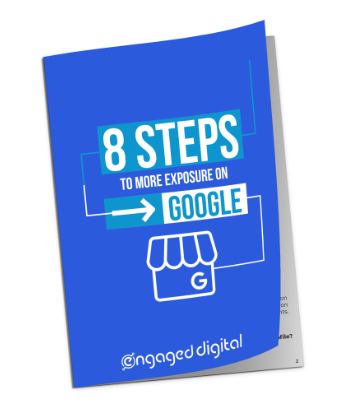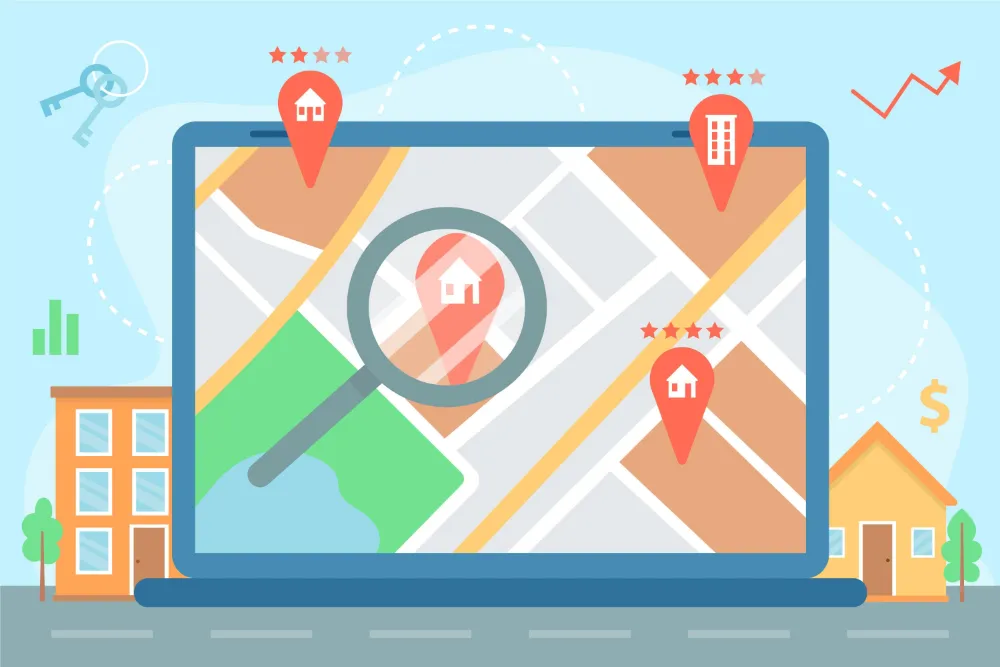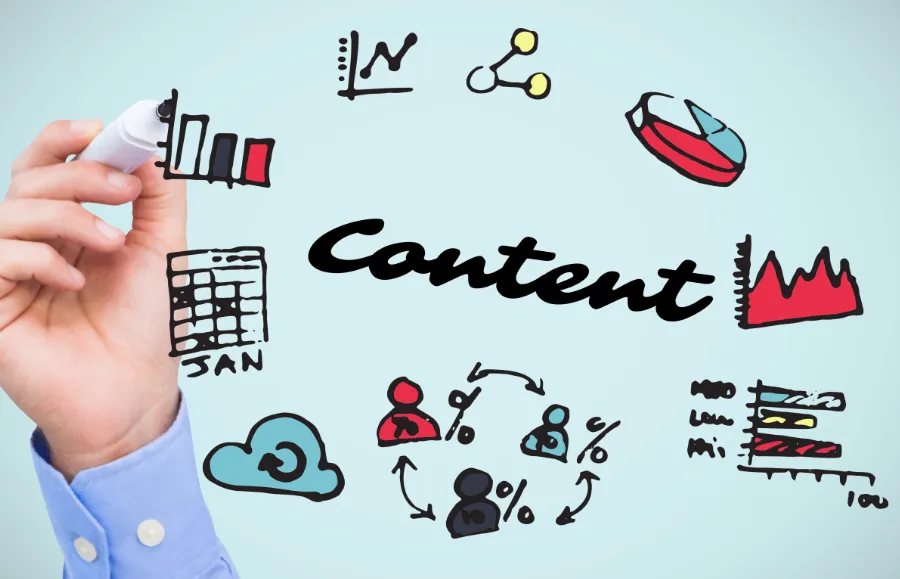Looking to take your marketing efforts to the next level? Well, it’s time to consider webinar marketing. Yes, you heard it right! Webinar marketing is not just another trend; it’s a powerful tool that can revolutionize the way you engage with your audience.
Imagine having a platform where you can showcase your expertise, build credibility, and interact with your target audience in real-time. That’s exactly what webinars offer. With webinars, you can break free from geographical limitations and reach a global audience eager to learn from you.
But how do you create a successful webinar campaign? How do you promote your webinars effectively? Don’t worry; we’ve got you covered.
So, if you’re ready to captivate your audience, boost brand awareness, and generate leads like never before – keep reading! It’s time to unlock the immense potential of webinar marketing.
Why Webinar Marketing is Essential for Business Growth
Webinar marketing has become an essential tool for businesses looking to grow and thrive in today’s competitive landscape. With its ability to generate high-quality leads, establish thought leadership, nurture relationships with potential customers, and increase brand visibility, webinars have proven to be a powerful strategy for driving business success.
Generating High-Quality Leads
One of the key benefits of webinar marketing is its effectiveness in generating high-quality leads. By offering valuable content through webinars, businesses can attract individuals who are genuinely interested in their products or services. These leads are more likely to convert into paying customers since they have already shown a level of engagement and interest by attending the webinar.
To maximize lead generation potential, businesses can leverage webinars by incorporating interactive elements such as polls, surveys, and Q&A sessions. These features not only engage attendees but also provide valuable insights into their preferences and needs.
Establishing Thought Leadership
Webinars offer businesses an opportunity to showcase their expertise and establish themselves as thought leaders within their industry. By sharing valuable insights, trends, and best practices during webinars, companies can position themselves as trusted authorities in their respective fields.
Through thought leadership, businesses can build credibility and gain the trust of potential customers. This positioning sets them apart from competitors and creates a lasting impression on attendees who may turn into loyal customers or advocates for the brand.
Nurturing Relationships with Potential Customers
Webinars provide a platform for businesses to nurture relationships with potential customers through valuable content delivery. Unlike traditional advertising methods that focus solely on selling products or services, webinars allow companies to educate and engage with their audience on a deeper level.
By addressing pain points, answering questions, and providing actionable insights during webinars, businesses can build trust and establish strong connections with attendees. This personalized approach fosters long-term relationships that go beyond transactional interactions.
Increasing Brand Visibility and Awareness
Hosting webinars can significantly increase brand visibility and awareness. By promoting webinars through various channels such as social media, email marketing, and industry partnerships, businesses can reach a wider audience beyond their existing customer base.
Webinars provide an opportunity for businesses to showcase their brand personality and values. Through engaging presentations, interactive discussions, and expert speakers, companies can leave a lasting impression on attendees. This increased brand visibility helps create top-of-mind awareness when potential customers are making purchase decisions.
Understanding the Power of Webinars in Lead Generation
Webinars have become an integral part of modern marketing strategies, thanks to their ability to generate quality leads and drive demand for products and services. By utilizing webinars effectively, businesses can capture valuable lead information, qualify prospects, and convert them into loyal customers.
Capturing Valuable Lead Information through Registration Forms
One of the key advantages of webinars is their ability to capture valuable lead information through registration forms. When potential attendees sign up for a webinar, they provide their contact details such as name, email address, and sometimes even phone numbers. This data serves as a goldmine for marketers looking to expand their customer base. By analyzing this information, businesses can gain insights into their target audience’s preferences and tailor future marketing campaigns accordingly.
Qualifying Leads by Analyzing Attendee Engagement
During a webinar session, attendees actively engage with the content being presented. They ask questions, participate in polls or surveys, and interact with other participants through chat features. This engagement provides valuable indicators of a lead’s interest level and potential as a customer. By closely monitoring attendee engagement metrics such as time spent watching the webinar, questions asked, or interactions made during the session, businesses can identify high-quality leads who are more likely to convert into paying customers.
Follow-Up Emails: Converting Leads into Customers
After the webinar concludes, it’s crucial to follow up with attendees promptly. Follow-up emails serve multiple purposes: nurturing relationships with leads, providing additional resources related to the webinar topic, and ultimately converting leads into customers. These emails should be personalized based on each lead’s interests and actions during the webinar session. Including relevant call-to-action buttons or links that direct them towards making a purchase or scheduling a consultation further enhances conversion rates.
Leveraging Analytics Data for Insights into Lead Behavior and Preferences
Webinars generate a wealth of analytics data that can provide valuable insights into lead behavior and preferences. By analyzing metrics such as attendance rates, engagement levels, and drop-off points, businesses can gain a deeper understanding of their audience’s interests and pain points. This knowledge allows marketers to refine their lead generation strategies, create more targeted content, and improve the overall effectiveness of future webinars.
Key Strategies for a Successful Webinar Marketing Campaign
Define clear objectives and goals before planning your webinar campaign.
Before diving into your webinar marketing campaign, it’s crucial to define clear objectives and goals. Without a solid plan in place, you risk wasting time and resources on a strategy that may not align with your overall marketing program. Take the time to determine what you hope to achieve through your webinars. Are you aiming to generate leads, increase brand awareness, or educate your target audience? By identifying these goals upfront, you can tailor your content strategies and campaigns accordingly.
Choose relevant topics that address the pain points of your target audience.
To capture the attention of your target audience, it’s essential to choose relevant topics that address their pain points. Conduct thorough research to understand the challenges and interests of your target audience. This will enable you to identify content marketing trends and develop webinars that provide practical advice and solutions. By addressing their needs directly, you’ll position yourself as an expert in the field while establishing trust with potential customers.
Promote your webinars across multiple channels to maximize reach and attendance rates.
Once you have planned out engaging webinar topics, it’s time to promote them across multiple channels. Utilize various marketing strategies such as email marketing, social media promotion, blog posts, and partnerships with industry influencers. By leveraging different platforms, you can maximize reach and increase attendance rates for your webinars. Consider creating compelling graphics or teaser videos to grab attention and entice potential attendees.
Engage with attendees during the live session through polls, Q&A sessions, and interactive elements.
A key element of successful webinar marketing is engaging with attendees during the live session itself. Make use of interactive elements such as polls or surveys throughout the presentation to gather valuable insights from participants. Incorporate Q&A sessions where attendees can ask questions related to the topic discussed. This two-way communication allows for a more personalized experience and fosters a sense of community. By actively involving your audience, you increase their satisfaction and the chances of them taking the next step in their customer journey.
Follow up with attendees after the webinar to nurture leads and encourage further engagement.
After the webinar concludes, don’t let your efforts go to waste. It’s crucial to follow up with attendees to nurture leads and encourage further engagement. Send personalized thank-you emails that include a recording of the webinar for those who couldn’t attend live. Provide additional resources or exclusive offers related to the webinar topic as a way to continue providing value. By maintaining communication with attendees, you can guide them towards the next steps in their customer journey, whether it’s signing up for a free trial, attending another webinar, or making a purchase.
Leveraging Email Marketing to Boost Your Webinar Attendance
Sending personalized email invitations with compelling subject lines can significantly increase open rates and drive more attendees to your webinar. When crafting the email invitations, make sure to address recipients by their name and use language that resonates with them. Personalization shows that you value their presence and increases the chances of them engaging with your content.
To further enhance attendance, consider using automated email sequences as reminders leading up to the webinar date. These sequences can be set up in advance, saving you time and ensuring consistent communication with your audience. A well-timed series of reminders helps keep your webinar top of mind for potential attendees, increasing the likelihood that they will mark their calendars and join you on the day.
In addition to reminders, it is crucial to include teaser content in your emails. This content should highlight key takeaways or benefits of attending the webinar, enticing recipients to register and participate. By providing a glimpse into what they can expect from your webinar, you create anticipation and curiosity among your email list subscribers.
When designing your email templates, make sure each one includes a clear call-to-action button that leads directly to the registration page. The call-to-action should be visually appealing and stand out from the rest of the email content. By making it easy for recipients to register with just a click, you remove any friction in the process and increase conversion rates.
To maximize registrations even further, leverage other channels such as social media or newsletters to promote your webinar. Include snippets or links in these platforms that direct interested individuals back to your registration page. By reaching out through multiple avenues, you expand your reach and attract a wider audience.
Building a sense of urgency can also be an effective strategy for boosting webinar attendance. Consider incorporating elements such as limited-time offers or exclusive bonuses for early registrants. Highlighting scarcity encourages guests to register promptly rather than delaying their decision until later.
Lastly, don’t forget to follow up with registered attendees before the webinar. Send them a confirmation email with all the necessary details, including the date, time, and any additional instructions they may need. This proactive communication helps solidify their commitment and ensures they are well-prepared for the event.
By leveraging email marketing techniques such as personalization, automated sequences, teaser content, clear call-to-action buttons, multi-channel promotion, urgency-building strategies, and pre-webinar follow-ups, you can significantly increase your webinar attendance. Remember to continuously analyze your email metrics and make adjustments based on audience engagement to optimize your efforts further.
So start implementing these strategies today and watch as your webinar attendance soars!
Crafting Engaging Webinar Content that Captivates Your Audience
Capturing the attention of your audience is crucial. To ensure that your message resonates and keeps attendees engaged throughout, you need to craft compelling webinar content.
Deliver a Strong Opening Statement or Question
The beginning of your webinar sets the tone for the entire session. To capture attention from the start, deliver a strong opening statement or question that piques curiosity and sparks interest. Consider starting with a thought-provoking question related to the topic at hand or an intriguing statement that highlights the value participants can expect from attending.
Enhance Your Presentation with Visuals
Visual elements play a vital role in enhancing engagement during webinars. Incorporate slides or videos into your presentation to complement your spoken content. These visuals not only reinforce key points but also provide visual stimulation, helping participants stay focused and interested in what you have to say. Use eye-catching graphics, charts, and images strategically to support your message and make it more memorable.
Harness the Power of Storytelling
Storytelling has always been an effective way to captivate audiences, and webinars are no exception. Weave narratives into your webinar content to make it relatable and memorable for attendees. Share real-life examples, case studies, or personal anecdotes that illustrate key concepts or demonstrate how your product or service has positively impacted others. By incorporating storytelling techniques, you can create an emotional connection with your audience and increase their engagement.
Encourage Audience Participation through Interactivity
To keep participants actively engaged throughout the webinar, incorporate interactive elements into your content strategy. Polls, quizzes, live demonstrations, and Q&A sessions are excellent ways to encourage audience participation and create an interactive experience. Allow attendees to share their opinions through polls and quizzes, and address their questions during dedicated Q&A segments. By involving your audience in the conversation, you foster a sense of community and make them feel valued.
Crafting engaging webinar content is essential for driving audience engagement and ensuring a successful webinar. By delivering a strong opening statement or question, using visuals to enhance your presentation, incorporating storytelling techniques, and encouraging audience participation through interactivity, you can captivate your audience and leave a lasting impression. Remember that the key to effective webinar content lies in its ability to deliver value while keeping participants engaged from start to finish.
Incorporating these strategies into your webinar content creation process will help you create compelling digital experiences that resonate with your audience. As you refine your content management approach, consider the unique needs and preferences of different audiences. Tailor your content supply chain accordingly to ensure maximum impact across various platforms and channels.
By harnessing the power of engaging webinar content, you can cultivate meaningful customer experiences, drive brand loyalty, and achieve remarkable results in your marketing efforts. So go ahead – craft captivating webinars that captivate your audience like never before!
Promoting Your Webinar on Social Media Platforms
Creating compelling social media posts is essential. These posts should highlight the value and benefits that attendees can expect from participating in your event. By crafting engaging content, you can grab the attention of your target audience and entice them to sign up.
Utilizing relevant hashtags is a powerful way to expand the reach of your webinar promotion. Research popular hashtags related to your industry or topic and incorporate them into your social media posts. This will help increase visibility and attract individuals who are actively searching for information or events like yours. Consider tagging industry influencers in your posts to leverage their following and tap into their network.
To generate interest and anticipation for your webinar, share teaser content or snippets from previous webinars. This gives potential attendees a taste of what they can expect, enticing them to register for the full event. Teasers could include intriguing statistics, thought-provoking questions, or exciting highlights from past presentations.
Engaging with your audience on social media is crucial for building relationships and fostering a sense of community around your webinar. Respond promptly to comments, questions, and shares related to your event. Show genuine interest in what people have to say and provide helpful answers or insights. By actively participating in conversations, you’ll demonstrate credibility and encourage more people to engage with your content.
In addition to organic promotion efforts, consider using paid advertising on social media platforms. Running targeted ads allows you to reach a wider audience who may not be familiar with your brand but would find value in attending your webinar. Utilize the targeting options available on each platform to ensure that you’re reaching the right people based on demographics, interests, or behaviors.
Blogs are another effective channel for promoting webinars. Write informative blog posts related to the topic of your webinar and include a call-to-action encouraging readers to sign up for the event. Share these blog posts across your social media channels to drive traffic and generate interest. Consider collaborating with industry influencers or guest bloggers who can contribute their expertise and help promote the webinar to their audience.
To further engage your audience, create polls on social media platforms to gather insights or opinions related to your webinar topic. This not only encourages participation but also provides valuable feedback that can inform the content of your event. Share the poll results with your followers and spark conversations around the findings.
As the date of your webinar approaches, use countdown posts on social media to build excitement. Highlight key speakers, topics, or exclusive bonuses that attendees will receive. By creating a sense of urgency, you’ll encourage more people to register before it’s too late.
After-Webinar Engagement
Hosting a webinar is just one part of the overall engagement process. The follow-up is equally critical to ensure that the attendees reap the maximum benefits and are led closer to your intended goal, be it sales, awareness, or relationship building. Here’s a checklist of things to do after hosting a webinar:
- Thank Attendees: Send a thank-you email to everyone who attended. This is a simple courtesy that can make a significant impact. You can also include a brief survey or feedback form to understand their experience and gather suggestions for improvement.
- Provide a Recording: Not everyone can attend the webinar in real-time. Even those who attended might want to revisit certain sections. Provide a link to a recording of the webinar, either in the thank-you email or as a separate communication.
- Share Presentation Slides: If you used presentation slides during the webinar, consider sharing them with the attendees. Tools like SlideShare can be useful for this.
- Feedback and Surveys: Apart from thanking the attendees, you can embed a short survey in your follow-up email to collect feedback. This can provide insights into what went well and what can be improved for future sessions.
- Engage Non-Attendees: There will always be registrants who couldn’t attend. Reach out to them with a different email, acknowledging their absence, and providing them with a link to the recording so they don’t feel left out.
- Special Offers or Promotions: If the webinar was geared towards promoting a product or service, consider offering a limited-time discount or bonus to attendees. This adds value and could lead to conversions.
- Q&A Follow-up: There might have been questions that were left unanswered due to time constraints. Compile these and send out an FAQ or dedicate a blog post to address them.
- Promote Next Steps: If you have upcoming webinars, events, or relevant content, promote them in your follow-up communications.
- Analyze Attendance and Engagement: Use the analytics from your webinar platform to understand audience engagement, drop-off points, and other important metrics. This will help in refining future webinar strategies.
- Repurpose Content: The content from your webinar can be repurposed in various formats – blog posts, infographics, short videos, podcasts, etc. This not only provides value to a wider audience but also enhances your content marketing efforts.
- Engage on Social Media: Share highlights, testimonials, or key takeaways from your webinar on your social media channels. Engage with attendees who might have shared or commented on your webinar.
- Build Your Email List: Use the registration and attendance data to build or segment your email list. This will be invaluable for promoting future webinars or related content.
- Plan for the Next One: Based on feedback and your own observations, start planning for your next webinar. Consider topics, formats, and promotional strategies that can increase attendance and engagement.
By effectively following up after a webinar, you not only maximize the value for attendees but also enhance the overall success of your webinar strategy.
Harnessing the Potential of Webinar Marketing
Congratulations! You now have a solid understanding of the power of webinar marketing and how it can drive business growth. By leveraging webinars, you can generate leads, engage your audience, and boost your brand’s visibility. But don’t stop here – it’s time to put your knowledge into action!
To maximize the impact of your webinar marketing campaigns, start by crafting compelling content that captivates your audience. Remember, engaging storytelling and interactive elements are key to keeping viewers hooked. Leverage email marketing to promote your webinars and boost attendance rates, ensuring that you reach as many potential customers as possible. And don’t forget about the power of social media – use platforms like Facebook, Twitter, and LinkedIn to spread the word about your upcoming webinars.
Now that you’re armed with these strategies, it’s time to take action! Start planning your next webinar campaign today and watch as your business grows through increased lead generation and customer engagement.
FAQs
How often should I host webinars?
Webinar frequency depends on various factors such as your target audience’s preferences and availability. It’s essential to strike a balance between providing valuable content and not overwhelming your audience. Consider hosting webinars monthly or quarterly initially, then adjust based on attendee feedback and engagement levels.
What equipment do I need for hosting a webinar?
To host a successful webinar, you’ll need reliable internet access, a computer or laptop with a webcam and microphone, webinar software (such as Zoom or GoToWebinar), presentation slides or materials relevant to your topic, and a quiet space free from distractions.
How long should my webinars be?
The ideal duration for webinars varies depending on the complexity of the topic and the level of engagement from participants. Generally, aim for 45 minutes to an hour for the main presentation portion, leaving additional time for Q&A sessions at the end.
How can I ensure high attendance rates for my webinars?
To boost attendance, start by promoting your webinars well in advance through various channels such as email marketing, social media, and your website. Offer incentives like exclusive content or limited-time discounts to encourage registration. Consider hosting the webinar at a time that accommodates different time zones and provide reminders leading up to the event.
How do I measure the success of my webinar marketing campaigns?
To gauge the effectiveness of your webinar marketing efforts, track metrics such as registration rates, attendance rates, engagement during the session (polls answered, questions asked), and post-webinar feedback. Analyzing these data points will help you identify areas for improvement and refine your future webinar strategies.







